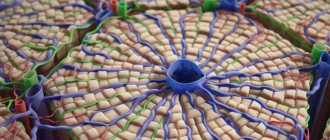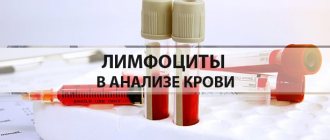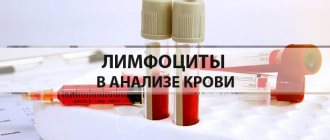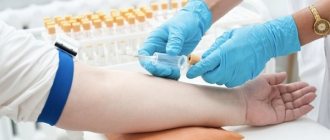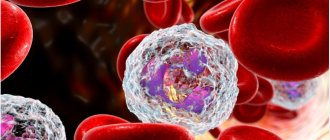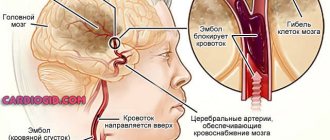Generally accepted norms of indicators
The acceptable level of bilirubin concentration for each age is different. The highest concentration of the substance in the blood is observed in newborns, in the initial stages of life, up to 200 µmol/l, this is due to the period of adaptation of the newborn’s gastrointestinal tract to the digestion of mother’s milk. The acceptable level of bilirubin concentration for each age will be different. The highest concentration of the substance in the blood is observed in newborn children, in the initial stages of life. In one-year-old children and children under 13 years of age, a satisfactory indicator of the concentration of indirect pigment is considered to be up to 20.3 µmol/l, for direct pigment up to 5.2 µmol/l.
The degree of concentration of the substance for adults should not cause concern if the survey analysis shows a level of up to 19.9 µmol/l for indirect, and 4.9 µmol/l for direct bilirubin, since such measurements are satisfactory for people of the adult age category.
Causes of increased bilirubin in the blood
The source of the pathological condition is caused by disruption of the liver, resulting in improper outflow of bile, which causes the occurrence of viral lesions and hepatitis.
symptoms of increased bilirubin
The cause of increased bilirubin in the blood may be:
- Chronic or autoimmune hepatitis.
- Non-benign neoplasms in the liver area.
- Incorrect functioning of the pancreas.
- Intoxication of the body through poisoning can also cause an increase in bilirubin.
By the way, any of the above reasons is pathological and requires immediate medical intervention and long-term treatment
Main indicators of liver tests
Let's consider the main indicators of liver tests, as well as their norms and reasons for deviations from reference values.
Alanine aminotransferase (ALT) and aspartate aminotransferase (AST)
ALT and AST are enzymes that are synthesized intracellularly, take part in carbohydrate and protein metabolism, support the functioning of many organs, and play a key role in the metabolism of one of the most important amino acids - alanine and aspartic acid. In the absence of pathologies, enzymes are present in the blood only in small quantities ⇓⇓⇓
| Age | ALT norms, units/l | AST standards, units/l |
| < 5 days | < 49 | < 97 |
| 5 days-6 months | < 56 | < 77 |
| 6-12 months | < 54 | < 82 |
| 1-3 years | < 33 | < 48 |
| 3-6 years | < 29 | < 36 |
| 6-12 years | < 39 | < 47 |
| 12-17 years old (girls) | < 34 | < 25 |
| 12-17 years old (boys) | < 27 | < 29 |
| over 17 years old (women) | < 31 | < 31 |
| over 17 years old (men) | < 41 | < 37 |
Despite some similarities, ALT and AST also have differences:
- ALT is produced to a greater extent in the liver, and to a lesser extent in the muscles, heart, pancreas, kidneys and other organs. In this regard, high levels of the enzyme primarily indicate liver disease.
- AST is found in the same cells as ALT, but in the myocardium its concentration is much higher. That is why the main reasons for increased AST are not only liver pathologies, but also heart diseases.
In what cases does ALT increase?
The main reasons for increased ALT include:
- death of hepatocytes (liver parenchyma cells) caused by viral hepatitis and exposure to toxic substances;
- Liver cirrhosis is a chronic pathology in which healthy organ tissue is replaced by connective tissue or stroma;
- intrahepatic cholestasis - insufficient secretion of bile due to a violation of its production by liver cells;
- fatty hepatosis is a syndrome accompanied by the accumulation of fat in the liver tissue;
- liver oncology.
Less common causes of high ALT values:
- heart failure;
- myocardial infarction;
- inflammation of the heart muscle;
- inflammation of skeletal muscles;
- severe burns;
- shock;
- alcoholism.
Also, the ALT value may be increased when taking hepatotoxic drugs, which include some antibacterial, anabolic, contraceptives, and drugs containing salicylic acid. As a rule, the increase in ALT in this case is temporary.
Symptoms indicating increased bilirubin
There are symptoms the presence of which in a person means that the percentage of bilirubin in the blood is too high:
- The whites of the eyes began to turn yellow.
- The skin color becomes more jaundiced.
- Itching of the skin, which intensifies at night.
These symptoms are an important indicator that the body is undergoing internal bile poisoning; ignoring these problems can lead to serious disruptions in the functioning of the body.
The often manifested bitter taste in the mouth is also one of the symptoms of increased bilirubin in the blood.
treatment of direct bilirubin in the blood
A rapid increase in this substance provokes the darkening of the urinary fluid to a brown color, and solid bowel movements take on a white color. All of the above symptoms are accompanied by severe weakness, high fever and enlarged liver. If you detect at least one of the above symptoms, you should immediately seek help from the nearest hospital.
Question to the doctor: how is obstructive jaundice treated?
When faced with jaundice, patients often do not know what to do and which doctor to contact with this problem. Many even hope that everything will go away on its own, especially if they do not experience pain. However, jaundice requires prompt action - both on the part of the patient and on the part of doctors. Exactly what actions - says the head of the Interventional Endoscopy Group of the National Medical Research Center of Surgery named after. A.V. Vishnevsky, endoscopist surgeon, candidate of medical sciences, associate professor Lyudmila Anatolyevna Marinova.
— The first manifestation of the disease is usually yellowing of the sclera. Then a yellow coloration of the skin appears, which is often accompanied by itching. Gradually the jaundice increases. And, depending on what led to it, there may be additional symptoms (pain, darkening of urine, lightening of stools). Pain is most often in the right hypochondrium, but it depends on the cause.
— Can the patient ignore these symptoms?
- He may not pay attention, not pay attention. He may think that everything will be fine, especially if he is not in pain. (Even a stone in the bile duct does not always cause pain - it can hide in some “pocket” for years and not make itself felt). But we must understand that jaundice is a big burden on the body due to intoxication with bilirubin, the level of which can be increased by 100, 200, and 300 times. It is not surprising that the brain, heart, lungs and other organs begin to suffer.
- What should be done?
- First of all, understand the cause of jaundice. There are enough options here - viral hepatitis B and C, blood diseases, acute poisoning, a stone or tumor in the bile duct. You need to immediately take a blood test - biochemical, general and for hepatitis. In addition, an ultrasound of the abdominal cavity is necessary. The results of these two simple steps will show what exactly caused the jaundice. And then the patient will know which specialty doctor should urgently contact. If we talk about obstructive jaundice, then surgeons are involved in its treatment.
— Obstructive jaundice is...
— Obstructive jaundice is due to the fact that the bile ducts are blocked. It could be a stone that got there from the gallbladder, or a neoplasm. As a result, the bile produced by the liver does not enter the duodenum, as it should be normally, and intoxication of the body begins, which manifests itself as jaundice. So the obstacle needs to be removed - this can only be done surgically.
- How does this happen?
— First, of course, it is necessary to establish the flow of bile. A common method looks like this: a puncture is made in the bile duct through the skin in the liver area and a tube is installed through which the bile flows out into a special container. If the cause of the disruption of bile outflow is a tumor, then the drainage remains as long as necessary for a full examination of the patient and determination of treatment tactics (in this case, he must drink bile, and this is a bitter, unpleasant liquid).
— Why should the patient drink bile? Is it impossible without this?
— Bile, a biologically active liquid produced by the liver, is very necessary for normal digestion and absorption of food and maintaining the balance of mineral elements. However, in patients with drainage installed, it flows out and the body does not receive it. So this is a forced and necessary measure: when a patient takes bile, it enters the body through the gastrointestinal tract.
— External drainage and bile intake are very uncomfortable for patients. Is there another way to treat obstructive jaundice?
— The most relevant one is endoscopic. It is effective and gentle, and is associated with fewer complications compared to the percutaneous method. In addition, it is a diagnostic and therapeutic procedure at the same time.
— Why is the endoscopic method not always used?
— The nuance is that it requires the most modern equipment and high-class specialists. Fortunately, we have all this at the Center, the method has been mastered at the highest level, so we use it and constantly share our experience: we speak at conferences, prepare scientific publications, and colleagues come to us for internships.
— What does intervention look like?
— We insert a thin surgical endoscope through the oral cavity and bring it to the place where the bile ducts flow into the duodenum. We make an incision, through it we perform contrasting of the bile ducts and establish the cause - what caused the block. If there is a stone in the duct, then we remove it through the incision made, and the natural bile outflow is restored. If the cause is a tumor, we look for a lumen in the duct that is blocked by the tumor, and into this lumen we place a stent (tube), through which bile will be directed from the liver to the duodenum, as it should be. The operation is performed under anesthesia.
— That is, if the problem is a stone, it is removed during this procedure?
- Yes, moreover, - you can even remove a stone that is larger in size than the internal cut made (we make it minimal). The stone is pre-crushed and then removed in parts.
— How does the patient feel after such an intervention?
— The patient does not even always understand that some kind of operation was performed (there are no incisions), and he recovers quickly. The development of events depends on the specific situation. If the problem was solved with the help of endoscopic intervention, then the person simply returns to normal life. If a neoplasm has been discovered in the bile duct or we are talking about stones in the gall bladder, then further treatment tactics are discussed. In any case, the patient’s life is no longer directly in danger (but a person can die from jaundice if help is not provided in time).
- What do you mean - there are no cuts? You're making a cut inside, right?
- I already said that he is very small. So much so that it does not require stitches and heals easily on its own. And this is one of the indicators of how gentle the endoscopic method is. It is the most physiological because it involves minimal intervention in the body. But technically this is a complex procedure: everything is done with precision, with a high degree of precision, in a jewellery-like manner. All together - the capabilities of the method, the most modern equipment and the corresponding serious training of specialists - ensure the effectiveness of the intervention while being gentle and comfortable for the patient.
Interventional endoscopy group of the National Medical Research Center of Surgery named after. A.V. Vishnevsky:
Treatment of elevated direct bilirubin
You can influence the high concentration of bilirubin in the blood by following a diet and doing physical exercise. After undergoing a biochemical examination of the blood, based on the tests obtained, the doctor prescribes the patient a set of treatment and recommendations aimed at establishing the proper functioning of the liver and the outflow of bile. Even with the slightest discrepancy with the norms, the doctor is obliged to prescribe treatment to correct the functioning of metabolic processes; you can often undergo such a course of treatment at home, while following all the recommendations. In this case, the examination results show a disappointing picture; if necessary, surgical intervention is required, followed by hospitalization in a hospital.
How is a biochemical blood test performed?
A biochemical blood test is a common type of diagnosis that doctors prescribe to assess the condition of the patient’s body. This is a quick and informative method that allows you to identify signs of asymptomatic diseases.
To obtain accurate data, the patient is recommended to prepare before going to the laboratory. Failure to follow the rules may result in incorrect diagnosis.
Basic requirements for the preparatory process:
- biochemistry is carried out in the morning (8-00 - 11-00);
- you need to come to the laboratory on an empty stomach (the period of fasting should be at least 8 and no more than 12 hours);
- the day before the test, you should not eat heavy food, you are allowed to drink only purified water;
- if the patient is taking medication, first check with the doctor whether a break is required;
- 1 hour before going to the clinic you should stop smoking;
- one day before the procedure, you should avoid outbursts of emotions and physical activity;
- It is recommended to sit directly in front of the door to rest for about 15 minutes.
The process of drawing blood involves applying a tourniquet and placing it above the elbow. The puncture site is treated with cotton wool soaked in an antiseptic. This is necessary to prevent infection. After inserting the needle, the nurse checks that the vein is full of blood. Next, the biomaterial is collected. When taking tests, the patient's body must remain motionless.
If it is not possible to take blood from the ulnar vein, the collection is carried out from other veins available for the procedure. The biomaterial is poured from the syringe into a test tube and sent to the laboratory along with the referral.
